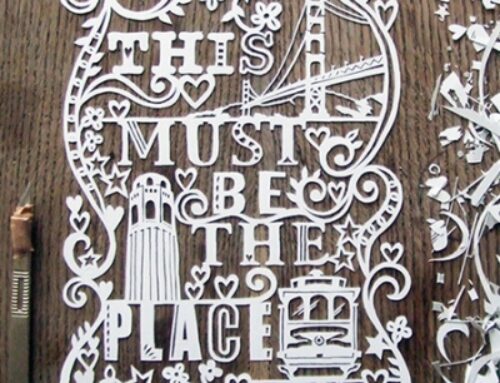The difficult strategy of unifying interventions to enhance the sense of local belonging with those to motivate tourist visits. The need to make the two fundamental drives of identity and exploration complementary. (published in Environmental networks and cities. Urban landscapes and quality of life (Barcelona, 2012)
Right from the definition of the European Convention (a ‘Landscape’ means an area, as perceived by people,….) landscape is exposed to a basic contradiction. It is assumed that perception and the sense resulting from it, which naturally derives from an entirely personal and subjective process, is instead a collective attribute, of the population as a whole.
This is an ambiguity that runs through the entire political strategy underlying the Convention: it proposes landscape as a founding factor of the identity of populations, i.e. a common good, which enhances the sense of community and local differences. But we know that this common good rests on the thousands of interpretations that subjective perceptions generate. These interpretations are naturally homogenised in peasant society, whose members are stable on places that change more slowly than the time of a lifetime, but are highly differentiated where society or places have been shaken and stirred recently.
This is evidenced, for example, by surveys of the sense attributed to the landscape by children, indigenous or immigrant, in a metropolitan hinterland.
Metropolitan hinterlands are territories where the melting-pot of the population or the standardisation of built spaces and the loss of local differences do not stabilise a deep-rooted relationship between places and those who frequent them. Cultural differences and the banality of the new places make the landscape regress from being the living matter of our living together, on which to base common values and conduct common battles, to a purely ideological term, reverting to its old meanings, of a nostalgic picture, of an idealised relationship with nature, solipsistic and powerless. It is a sterilisation of the vital potential of the relationship between people and territory, which takes away an essential resource from the nobly political strategy to which the European Convention would like to direct us, precisely in order to give hope to those banal places and uprooted generations.
Therefore, the common sense of landscape would be a resource for the value of identity (and therefore of difference) of our living, but only if it derives from design and political work. It is believed that where the landscape is poorly integrated with the inhabiting community (i.e. where the inhabiting community is disintegrated) processes must be triggered to make collective a sense that otherwise remains entirely subjective and generates very different and contrasting outcomes. It is thought that engagement in a common enterprise triggers a process that shifts our personal sense of identity into the product of working together with others. And if the common enterprise concerns relations with the territory we inhabit, the product is a piece of our sense of the common landscape, which acquires the value of a piece of our personal and collective identity. Only in this way will we feel proud of living in that place: somehow that landscape will become part of our personal cultural heritage.
But even in this case an ambiguity emerges: the common attribute, in addition to qualifying a collective endeavour (ours or that of our ancestors) is also an indicator of a non-dedicated, non-scientific consideration, connected precisely to the widespread feeling and to the ordinary, everyday (dis)attention that is normally reserved for the context. The common sense of landscape, the result of a collective enterprise, becomes common, ordinary sense, with time, when the enthusiasm is over, when the memory of the commitment has faded and only a vague sense of belonging remains, which only awakens with the Nimby syndrome, when we are told that they will change our world in a traumatic way. The ordinary sense of landscape, without design and attention, does not bring to light the endless ordinary havoc, the erosions of recognisability and memorial signs that can be recorded on the land every year, but which we do not register.
In fact, a symptom of unease can be read in the exponential growth of tourism, which is not only explained by increased spending possibilities: the affluent of 100 years ago only rarely moved from their beautiful homes and the cities they had helped to make pleasant.
Rather, one can explain the flow of tourists in ‘cities of art’ by a need for public space, for signs of community, for places that have such an identity of their own that not only the inhabitants but also the visitors share it. Thus, with a defeat for modernity, the cycle of decomposed identity between the personal and the collective is fulfilled: the metropolitan inhabitant, lacking in the places he inhabits a collective identity recognition, tries to reconstruct a landscape identity for himself, feeling himself a citizen of the world, searching not for a homeland but for a diffuse heritage, a collection of places to which he can entrust his personal identity.
In visiting the places of others, there is a sense of respect and recognition of the dignity of others to live well, happily, which sometimes even becomes envy: those others are superior or at least equal to us as inhabitants of the earth, because they own their landscapes. The mistrust we reserve for immigrants is reduced by going to visit their landscapes and, conversely, those we know without an identity landscape heritage seem to us as handicapped, children of a lesser god. Perhaps it is the last sign of the prevalence of the cultivator man over the hunter, but it is pleasing to think that the first written Greek text, the foundation of our civilisation, is not an epic text but The Works and the Days, which Hesiod consigned to writing to testify to the importance of staying in places and managing the relationship with nature: It is referred to by all Odysseus, who from then on prefers ‘stony Ithaca’, marked by the bed and throne made with his own hands, to any other place where he was kept as a guest of inert and purposeless luxury.
1 v. A.De Nardi, 2010, Il paesaggio nella costruzione dell’identità e del senso di appartenenza al luogo: indagini e confronti tra adolescenti italiani e di origine straniera, PhD Thesis Padua. They also reflect on the theme in many of the contributions to the online collection AA.VV. Di chi è il paesaggio, 2009, a c. B.Castiglioni and M.De Marchi
2 v.C.Raffestin, 2005 , Dalla nostalgia del territorio al desiderio di paesaggio, Alinea, Florence
3 v. G. Dematteis, 2000, Il senso comune del paesaggio come risorsa progettuale, in AAVV, Il senso del paesaggio, IRES Turin; also P. Castelnovi, 2004, Il paesaggio limite del piano e del progetto, in Quaderni della Ri-vista del dottorato di ricerca in progettzione paesistica, Florence




